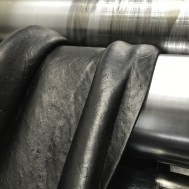EPDM is an ASTM D1418 designation of ethylene-propylene. To form EPDM, a copolymer of ethylene and propylene (EPR) is combined with a third commonomer known as diene. EPDM is a non-toxic, FDA-approved synthetic material that has gained widespread industry popularity for its excellent resistance and chemical compatibility properties.
With many key applications in the medical and automotive industries, chemical resistance is critical. Here’s a closer look at the chemical compatibility and benefits of EPDM rubber:
Chemical Compatibility
In the medical and automotive industries, rubber parts are often required to seal against harsh chemicals and fluids. EPDM seals offer excellent protection against:
- Polar fluids
- Polar solvents
- Alkaline cleaning products
- Alcohols
- Steam and hot water
- Acetaldehyde
- Acetamide
- Ammonia
Because EPDM compounds have a very low absorption to water, they act as a tough barrier against water and vapors. In addition to resistance against polar fluids and solvents, EPDM offers superior compatibility to these chemicals at elevated temperature—setting EPDM apart from other compounds.
Unique Resistance Properties
EPDM offers far more advantages than chemical resistance. In fact, EPDM rubber is known for its excellent resistance to ozone, weather conditions, UV rays, and aging—making it a prime material for outdoor applications. Additionally, EPDM is the most waterproof rubber available. These unique resistance properties highlight the durability and resilience that EPDM seals have to offer.
Key Applications
Based on its excellent working properties, there are many industries that rely on EPDM seals. While most prevalent in the automotive industry, there are a number of applications in which EPDM is commonly found, including:
- Automotive: Brake systems, cooling systems, vehicle weather stripping, seals, low torque drive belts
- Industrial: Water system o-rings, gaskets, electrical insulators, connectors for wires and cables
- Construction: Roofing, expansion joints, water-tight applications, HVAC systems
- Medical: Respiratory equipment, pumps, drug delivery devices, IV components
Limitations
While EPDM is compatible with a wide range of chemicals, it offers no resistance to hydrocarbon fluids. Additionally, EPDM seals absorb oil and gas, making them a weak defense in oil and gas applications.
Want to talk more about EPDM?
Contact an engineer today.
